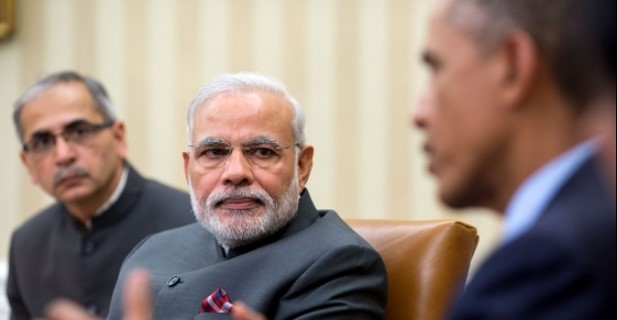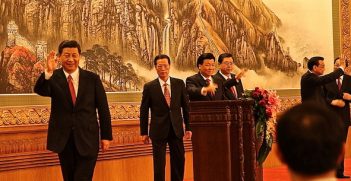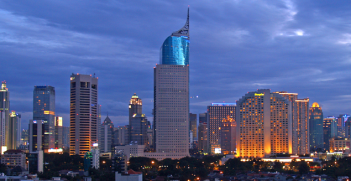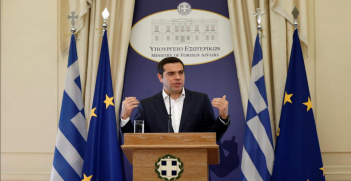Global Nuclear Orders and India

India’s long-term efforts to become part of global nuclear orders are paying off with membership of the Missile Technology Control Regime now a mere formality and a vote on its acceptance into the Nuclear Suppliers Group up for discussion in Korea this week.
The 1968 Nuclear Non-proliferation Treaty (NPT) prohibits all state parties from aiding in any form non-nuclear-weapon states getting the bomb. Accordingly, assistance with peaceful applications of nuclear energy is subject to safeguards. There is now general acceptance of export controls to reduce the risk of nuclear trade being diverted into weapons programs.
The 48-member Nuclear Suppliers Group (NSG) was established in 1975, after India’s 1974 nuclear test, to tighten export procedures for sensitive nuclear materials and technology to ensure their non-diversion to weapon programs. The 42-member Australia Group, established in 1985, is an informal forum which, through the harmonisation of export controls, seeks to ensure that exports do not contribute to the development of chemical or biological weapons. The 1987 Missile Technology Control Regime (MTCR) was created by the G7 to prevent the proliferation of missile and unmanned aerial vehicle technology. The 1996 Wassenaar Arrangement is a voluntary regime to prevent the export of conventional arms and dual-use technologies to states or groups whose behaviour is a cause for serious international concern.
India denounced the export control arrangements as technology-denial regimes or supplier cartels that exacerbated the NPT imbalance between non-proliferation and disarmament obligations. After its nuclear tests in May 1998, India proudly declared itself a nuclear weapons possessing state. Uncharacteristically, it made a hard-headed calculation that the only country that really mattered in breaking out of the anticipated punitive measures to curtail its nuclear ambitions was the US; once Washington relented, most others would follow no matter how reluctantly or tardily. Thereafter, Washington would also be the pathway to integrating with the global nuclear orders.
The calculation proved correct on both counts. In September 2008, under strong pressure from the US which had just negotiated a bilateral peaceful uses agreement with India, the NSG decided to exempt India from the requirement for application of comprehensive safeguards to trigger list items. The India-specific exemption from NSG nuclear trade restrictions was based on a negotiated series of commitments by India to adhere to NSG guidelines and control lists, separate civilian from military nuclear facilities, place some civilian facilities under International Atomic Energy Agency safeguards, maintain a unilateral moratorium on nuclear tests, etc.
The NPT itself is ruled out forever for nuclear-armed India because, reminiscent of Alice in Wonderland, its definition of a nuclear weapon state is neither empirical nor analytical, but chronological—a country that exploded a nuclear device before 1 January 1967. Over time non-membership is likely to prove more damaging to the credibility of the NPT than to India’s nuclear weapon ambitions. But India has made no secret of wanting to join the export control regimes, projecting itself as a responsible nuclear power.
During a visit to India in 2010, US President Barack Obama declared support for Indian membership of the four export control regimes. While the NSG is India’s priority, it considers itself well-qualified for membership of all four regimes given its firm commitment to non-proliferation, effective export controls and capacity to produce regime-regulated goods and technologies. Initially India sought entry into all four regimes as a package, but then diplomatic sense prevailed and India began canvassing membership one by one.
The first payoff came on 6 June with confirmation that, as none of the 34 MTCR members had lodged an objection, India’s membership was now a formality. This paves the way for India to acquire high-end missile technology and state of the art surveillance drones.
After seven years of quiet diplomacy, on 12 May India formally applied for membership of the NSG—followed by Pakistan a week later. During Indian Prime Minister Narendra Modi’s 7–9 June visit to the US, Westinghouse and the Nuclear Power Corporation of India finally signed an agreement for the construction of six new nuclear reactors, although the contract may take another year to be finalised. Before and after the US stop, Modi also lobbied other NSG members Switzerland and Mexico to support India’s membership and Reuters reported that resistance was generally softening. Japan’s ambassador to India Kenji Hiramatsu has said Tokyo supports India’s NSG bid and will work with New Delhi to make it happen.
In paragraph 12 of their joint communiqué of 7 June, Obama and Modi “looked forward to India’s imminent entry into the” MTCR; Obama “welcomed India’s application to join” the NSG, “re-affirmed that India is ready for membership”, and “called on NSG Participating Governments to support India’s application”. The US also reaffirmed “its support for India’s early membership of the Australia Group and Wassenaar Arrangement”.
Critics insist that NSG membership for India would inflict further serious damage on the global nuclear non-proliferation regime. Washington remains committed to lobbying in support. China, which is also Pakistan’s nuclear patron, remains opposed to India’s NSG application, ostensibly because India is not an NPT party. Because NSG makes membership decisions by consensus, China’s opposition cold derail India’s bid. Because of the consensus procedure, some fear that once India is in, it could veto Pakistan’s application. Many would prefer a criteria-based decision—which, given its track record, would still likely leave Pakistan in the cold—than make an exception for a US security partner. The subject will next be taken up at the NSG plenary meeting in Seoul on 20–24 June.
India has muted criticisms of China’s opposition, suggesting that a deal may be being quietly negotiated behind the scenes. India and the US refrained from an explicit reference in the Modi-Obama communiqué to China’s assertiveness in the South China Sea. An obdurate China will have to calculate the reputational costs of backing an ally that is more of a diplomatic liability than an asset, the risks of catalyzing still deeper India-US security cooperation, and a cooling of Sino-Indian cooperation on unrelated international issues. Conversely, Washington may well dangle MTCR entry for China if Beijing stops blocking India’s NSG membership.
If India does become a member of the NSG that was set up 41 years ago to check India’s nuclear ambitions, it will be proof that history too does irony.
Ramesh Thakur, professor in the Crawford School, Australian National University, is co-convenor of the Asia-Pacific Leadership Network for Nuclear Non-Proliferation and Disarmament. This article is published under a Creative Commons Licence and may be republished with attribution.





